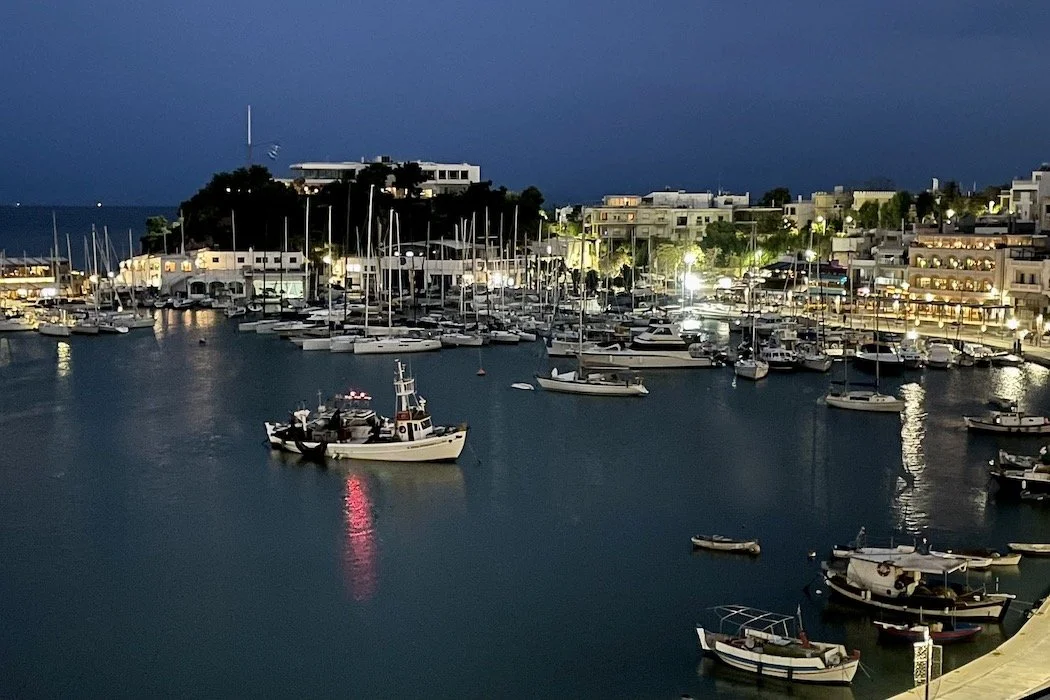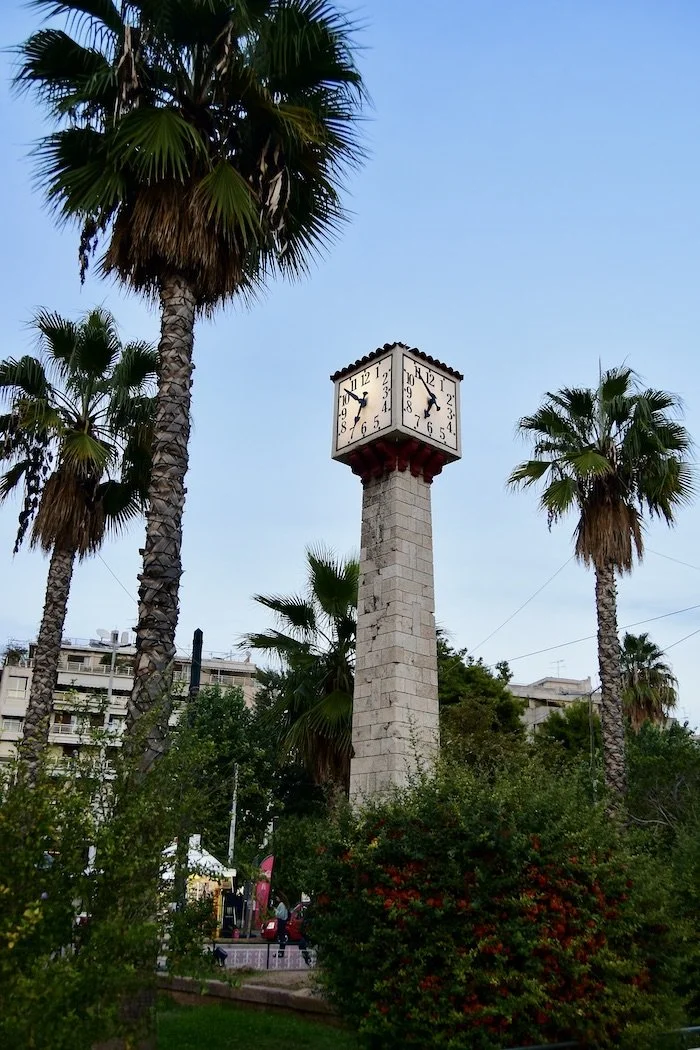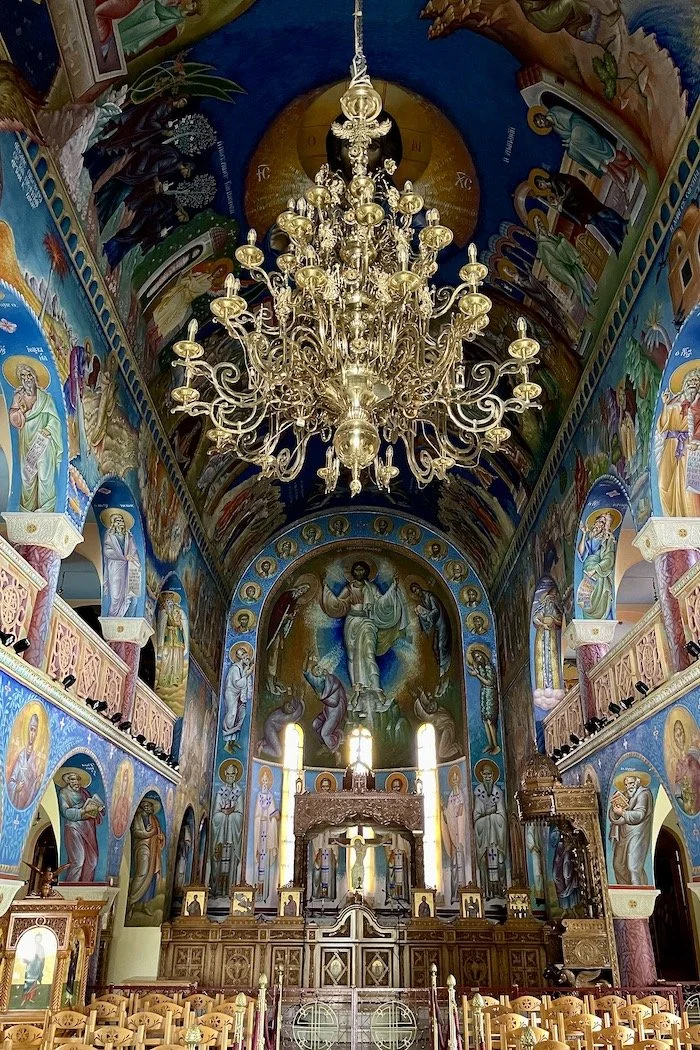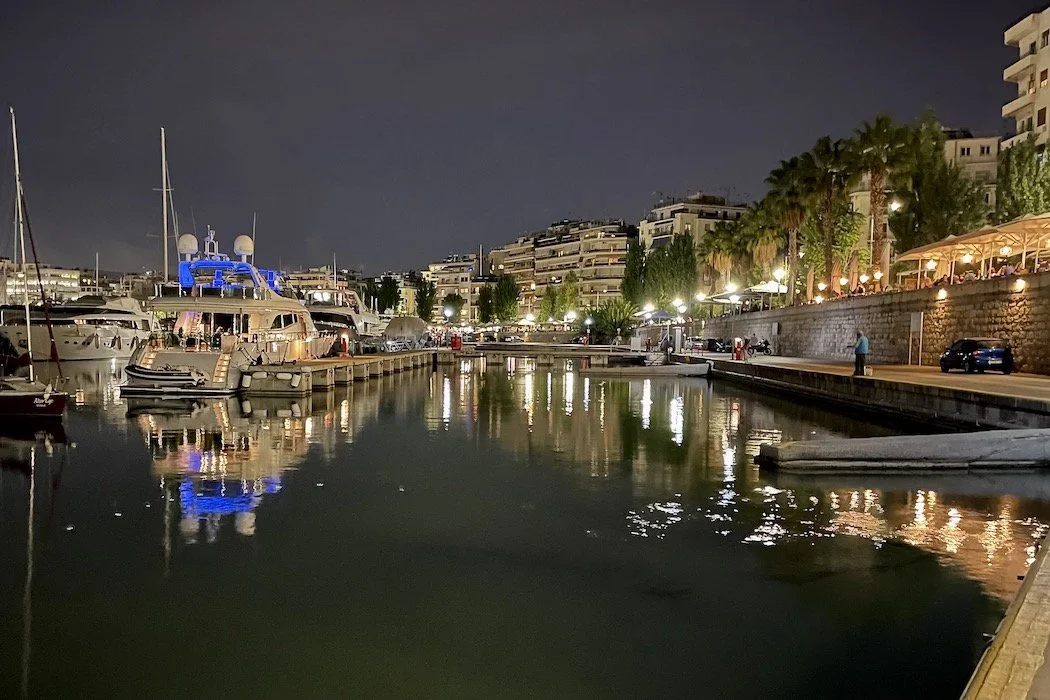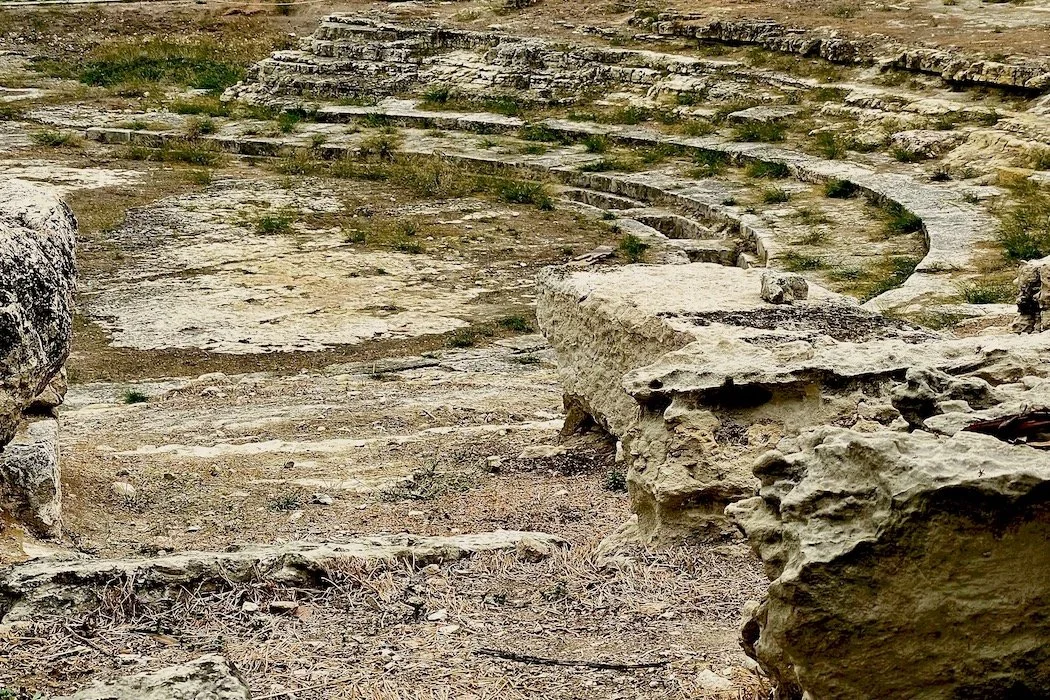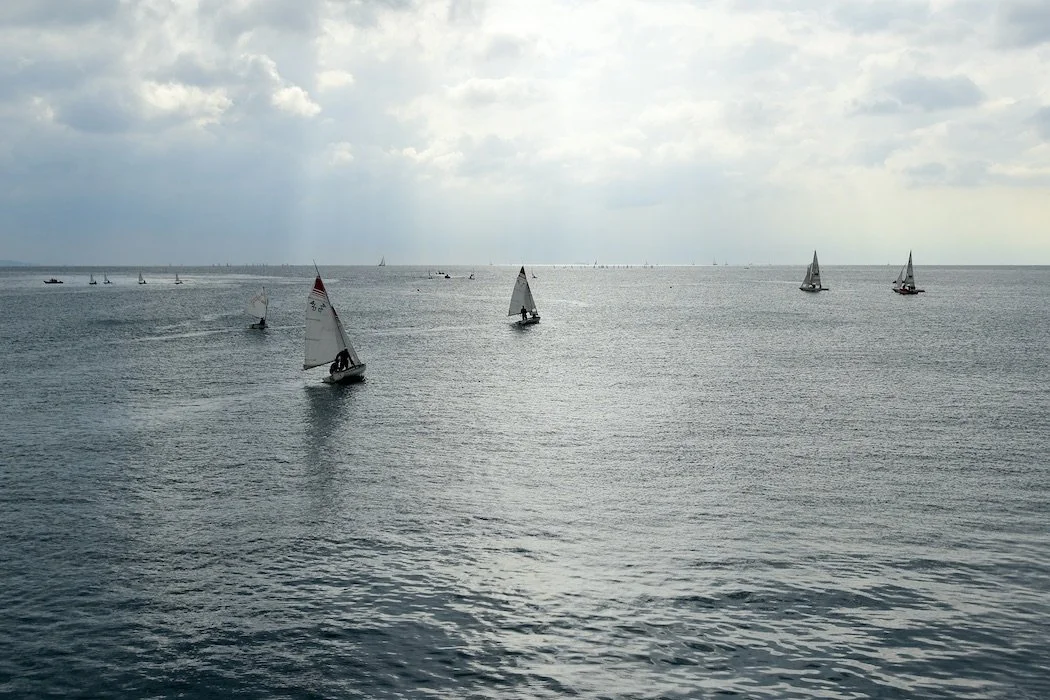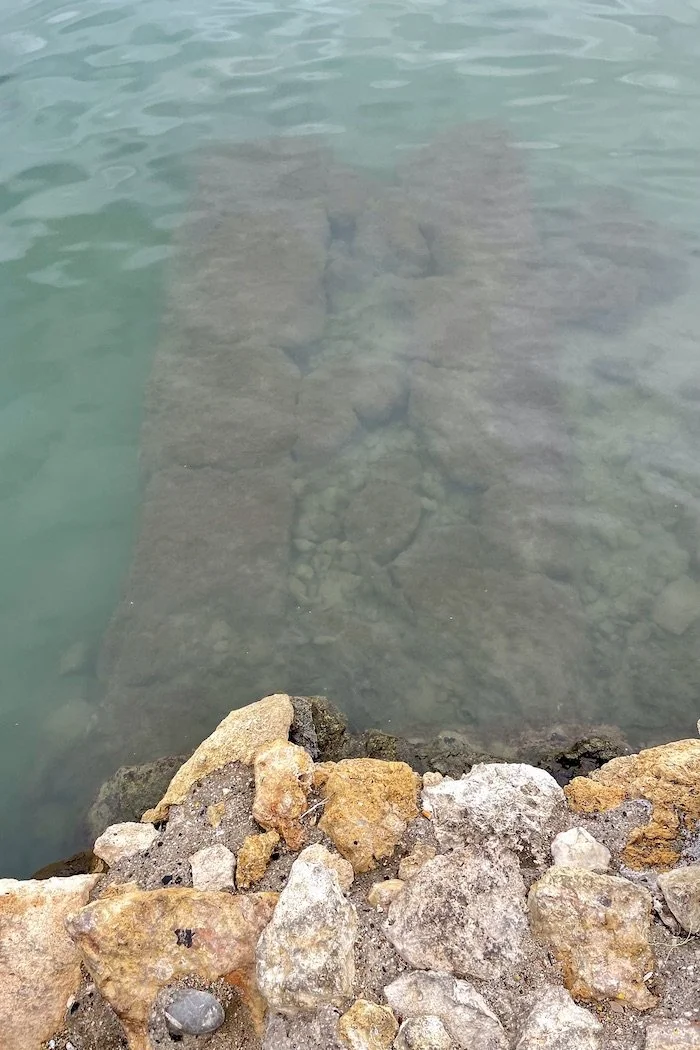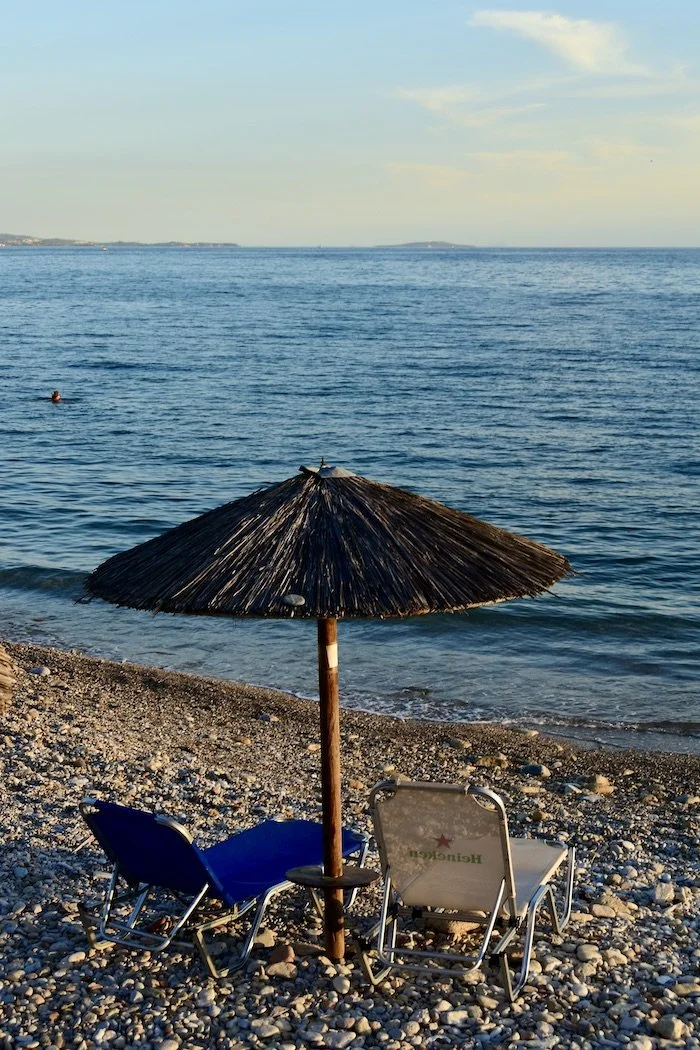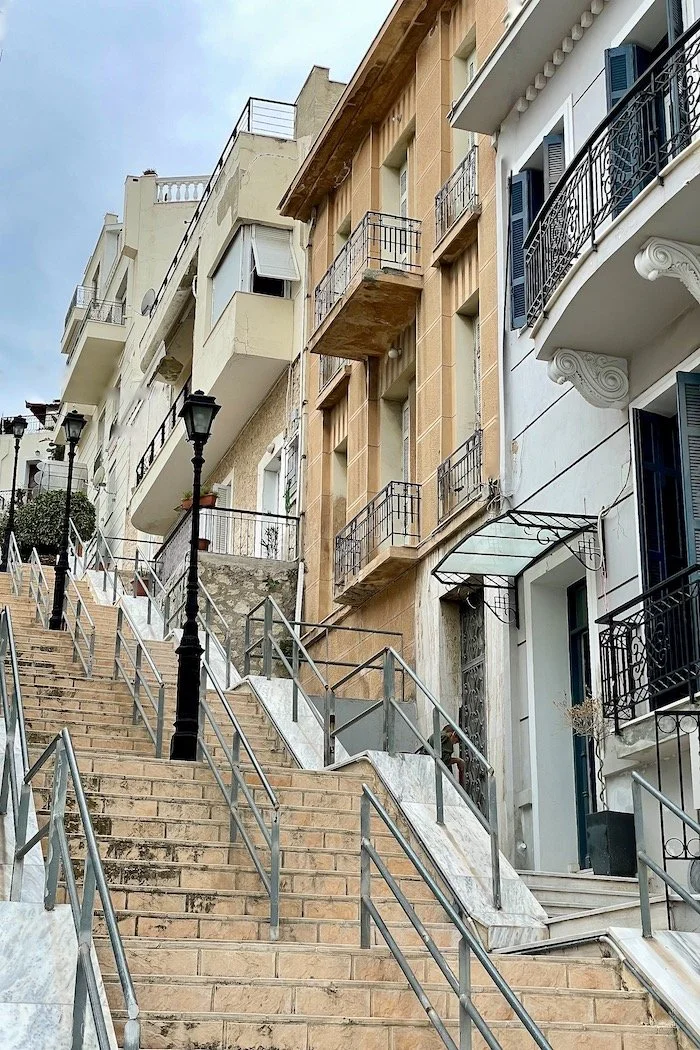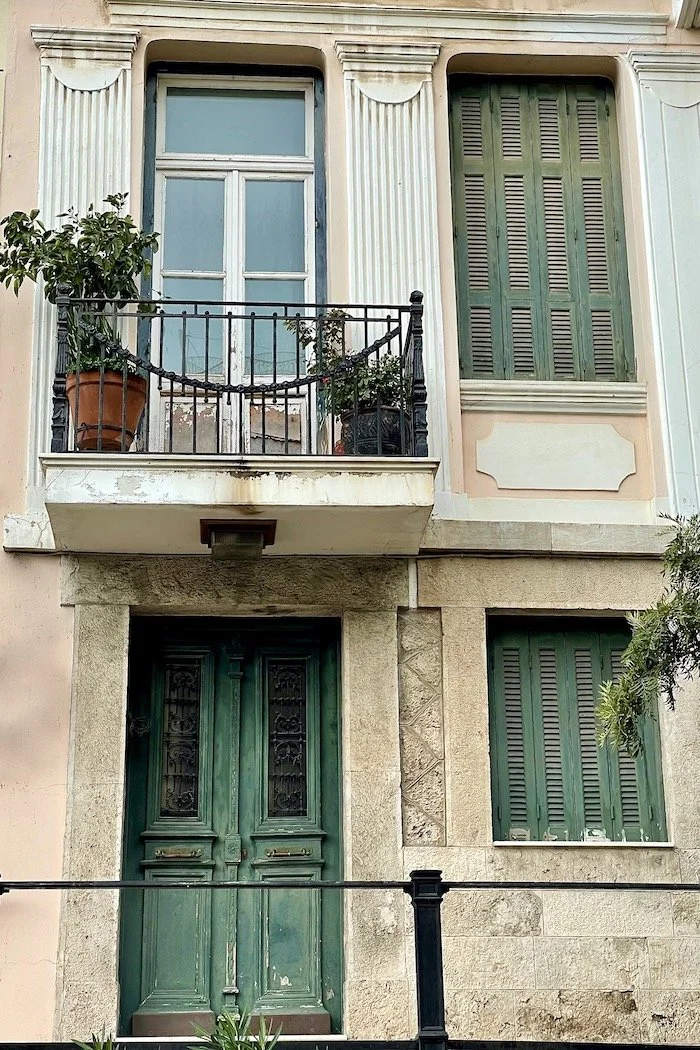Have fun in Underrated Piraeus
Evening at Microlimano harbor, Piraeus
“Fun is one of the most underrated ingredients…” – Richard Branson
On a visit to Greece, many travelers pass through Athens’ port of Piraeus, often walking between the metro station and a ferry. Even for Athenians, it’s a port. Rather than merely using Piraeus as a thoroughfare between the capital and the Saronic gulf islands, slow down at this underrated, contradictory city to have some fun: enjoy good views, eat incredible seafood, and stroll through picturesque neighborhoods.
Because ancient Athens needed a fortified naval base, Piraeus was deliberately planned to contain no less than three ports, Kantharos, Zea, and Mounichia, as well as homes for traders, warehouses, ship sheds, and more. During Athens’ Golden age (4th and 5th centuries BC), the city-state achieved greatness because of its fleet of warships based in Piraeus. Nowadays, Piraeus is a working-class city albeit with glitzy edges. Kantharos is the commercial port where freighters, ferries, and cruise ships call in; Zea, called Pasalimani by the locals, is home to Zea Yacht Harbor; Mounichia is Microlimano, a small fishing and sailing harbor.
At the horseshoe-shaped Bay of Zea, take a leisurely walk along the harborfront to see the very fancy mega yachts. Here, it’s easy to miss the submerged ruins of ancient Greek shipyards, specifically the tips of 50-meter-long stone ship sheds. At the shallow water’s edge near the harbor entrance, they can just be made out. Across the way, The Hellenic Maritime Museum showcases Greek naval history. The upper promenade is lined with good restaurants offering Greek and international specialties for a sunset dinner by the sea. Since this is the cosmopolitan side of town, socializing locals have their meeting point at the stone clock in the small harborside park. Like everywhere in Greece, Piraeus is peppered with ancient remains, also above water, many discovered during the metro extension. One of the most excavated is the ruins of Zea Theater, built in the second century BC, now sandwiched between apartment buildings a few blocks from the sea on the grounds of the Archeological Museum.
Votsalakia Beach, between Zea and Microlimano harbors, has both an organized beach with chairs and umbrellas, and plenty of free space where locals come to take an evening dip near football (soccer) fields and swimming pools. On the hilltop above, a climb up many steps, the authentic neighborhood of Kastella is known for the Elijah Church that crowns the hill. One of the prettiest parts of the city, the narrow streets give this neighborhood the feel of an island offshore, with its brightly painted houses among small shops, cozy cafes, and nighttime discos where young, hip locals come for fun.
More intimate than Zea is Microlimano (small port), the former Mounichia naval base, where it’s a steep downhill walk from the main road to the seaside promenade. Traditional tavernas with rustic decor sit side-by-side and serve high-quality seafood, some with no menu, where waiters tell their customers what to order, namely the catch of the day. At sundown, cocktail bars replace the fish joints and nightlife begins. Fishing vessels, like in the old days, lie at the dock or at anchor, and on Saturdays, the sailing school emits dinghies and sailboats for the weekly regattas.
Don’t Miss:
A walk along Microlimano harbor at sunset.
Lunch Tip:
Bouboulina Café in a glass house at Alexandras Square, at the tip of the peninsula.
Bedtime:
The Alex in Kastella with a wonderful view over both Microlimano harbor and Athens including the Acropolis from the rooftop restaurant.
Subscribe for inspiration to have my posts drop directly into your inbox. *If you enjoyed what you read, please share this post with like-minded travelers.*
*All photographs are mine, taken with my Nikon D5600 or iPhone 12 Pro.*

